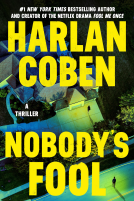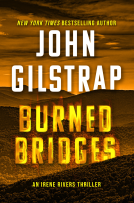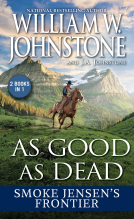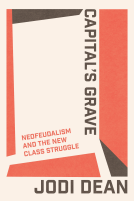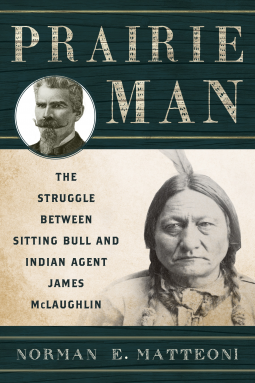
Prairie Man:
The Struggle between Sitting Bull and Indian Agent James McLaughlin
by Norman E. Matteoni
This title was previously available on NetGalley and is now archived.
Send NetGalley books directly to your Kindle or Kindle app
1
To read on a Kindle or Kindle app, please add kindle@netgalley.com as an approved email address to receive files in your Amazon account. Click here for step-by-step instructions.
2
Also find your Kindle email address within your Amazon account, and enter it here.
Pub Date Jun 16 2015 | Archive Date Jun 26 2015
Rowman & Littlefield | TwoDot/Globe Pequot
Description
Sitting Bull’s role at Little Big Horn has been the subject of hundreds of historical works, but while Sitting Bull was in fact present, he did not engage in the battle. The conflict with Custer was a benchmark to the subsequent events. There are other battles than those of war, and the conflict between Sitting Bull and Indian Agent James McLaughlin was one of those battles. Theirs was a fight over the hearts and minds of the Lakota.
U.S. Government policy toward Native Americans after Little Big Horn was to give them a makeover as Americans after finally and firmly displacing them from their lands. They were to be reconstituted as Christian, civilized and made farmers. Sitting Bull, when forced to accept reservation life, understood who was in control, but his view of reservation life was very different from that of the Indian Bureau and its agents. His people’s birth right was their native heritage and culture. Although redrawn by the Government, he believed that the prairie land still held a special meaning of place for the Lakota. Those in power dictated a contrary view – with the closing of the frontier, the Indian was challenged to accept the white road or vanish, in the case of the Lakota, that position was given personification in the form of Agent James McLaughlin. This book explores the story within their conflict and offers new perspectives and insights.
Norman E. Matteoni is a long-time student of the American West and the life and times of Sitting Bull. Both a legal scholar and practicing lawyer, he has written extensively in law review articles, appellate briefs and a two volume treatise on the Law of Eminent Domain in California. He also is an amateur photographer; and in 2008 he photographed areas of the northern plains, home of the Lakota.
A Note From the Publisher
Available Editions
| EDITION | Paperback |
| ISBN | 9781442244757 |
| PRICE | $18.95 (USD) |
Featured Reviews
 David W, Media/Journalist
David W, Media/Journalist
The sad story, told time and time again, is of continually betraying the natives, putting them in ever deeper jeopardy without them having broken any treaty. The government promised verbally, but never delivered. Congress reneged on treaties. Local agents ignored commitments (and diverted what little funding there was). Soldiers pursued innocents to get them off the land – their own land. All they wanted was to be left alone. It’s a story we should all be familiar with. Prairie Man a very good book to put it in perspective. Mort Sahl said that anyone holding a consistent political position in this country must eventually be tried for treason. That is essentially the story of the Sioux.
Norman Matteoni’s new angle is to draw parallels with the life of his jailer. James McLaughlin was a single-minded Catholic, in a position to impose his lifestyle on thousands of natives. He evolved into a camp commander, where every non-submissive act threatened his standing in Washington. He took action accordingly. All the while, he claimed to love Indians and made them his life. Or rather, made their lives his.
The reservation was a cross between public school and a prisoner of war camp. It was all about submission and control of the inmates. Kowtowing Sioux were made policemen to keep their own in line. They had a court system for inmates, but no one was all allowed to challenge the agency or the government. Everyone had to go to church. No one could leave without permission (they sent the cavalry after them). Freedom of speech, religion and assembly or even dancing were not permitted. Mail was intercepted and seized. Separation of Church and State was never even considered. The land of the free did not apply to its natives.
Possibly the most shameful was Civil War hero General William Tecumseh Sherman. He publicly advocated total extermination of the men, women and children. When that didn’t play well in Washington, he advocated extermination of the buffalo to bring the natives under US control and dependence. That helped greatly, as the Sioux had to surrender or die.
McLaughlin disliked Sitting Bull even before they met. Like a bad teacher, McLaughlin fixated on Sitting Bull as the cause of all his problems, and constantly blamed him and reported him to his superiors in reports to the Interior Department and Indian Affairs. At the same time, he saw Sitting Bull as his own ticket to fame and fortune, and took him on trips where Sitting Bull would be exhibited as some curious relic. Instead, he was a rockstar. He posed for photos and learned to sign autographs. Buffalo Bill took him on tour, along with McLaughlin’s wife as translator. It gave Sitting Bull a view of white society, and respite from the grind of reservation life. But he hated what he saw, and preferred being with his people, living a simpler life.
The best parts are the direct quotes from Sitting Bull. He was aware, sharp, eloquent, tactical, shrewd and parliamentarian. He scored points economically and repeatedly. He wasted no words. He spoke as he thought, since he could not make notes or prepare a speech. He had commanding presence, and could work a crowd effortlessly. He was a most worthy opponent. His was a class act:
-The white man knows how to make everything, but he does not know how to distribute it.
-The Sioux were better Christians before they heard of Christ than the white men are now.
He was of course shot by Sioux police McLaughlin sent to arrest him for not suppressing Ghost Dancing, even though McLaughlin insisted Sitting Bull was not Chief. Every day was worse than the previous, and it pretty much had to end something like this. In the ensuing manhunt, the cavalry caught up with the Sioux at Wounded Knee and mowed them down (along with 25 of their own). The government handed out 17 Medals of Honor to soldiers. The Sioux were dumped in a mass grave. McLaughlin was promoted to overseeing all Indian reservations.
David Wineberg
Readers who liked this book also liked:
Pamela Samuels Young; Dwayne Alexander Smith
Multicultural Interest, Mystery & Thrillers, Romance
Silvia Moreno-Garcia
Historical Fiction, Literary Fiction, Sci Fi & Fantasy
Dominic Pettman
Health, Mind & Body, Nonfiction (Adult), Politics & Current Affairs
